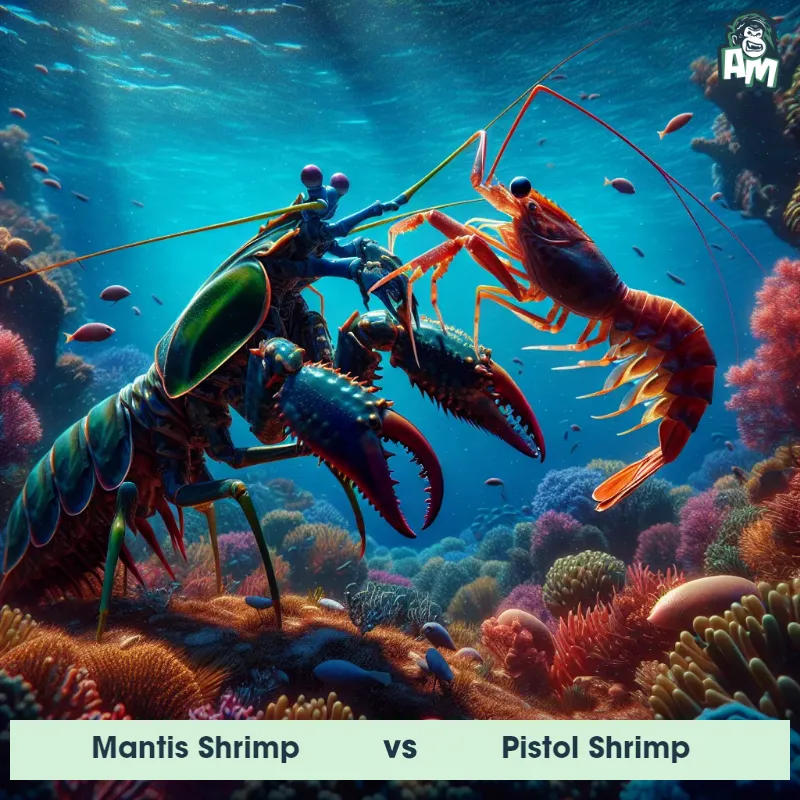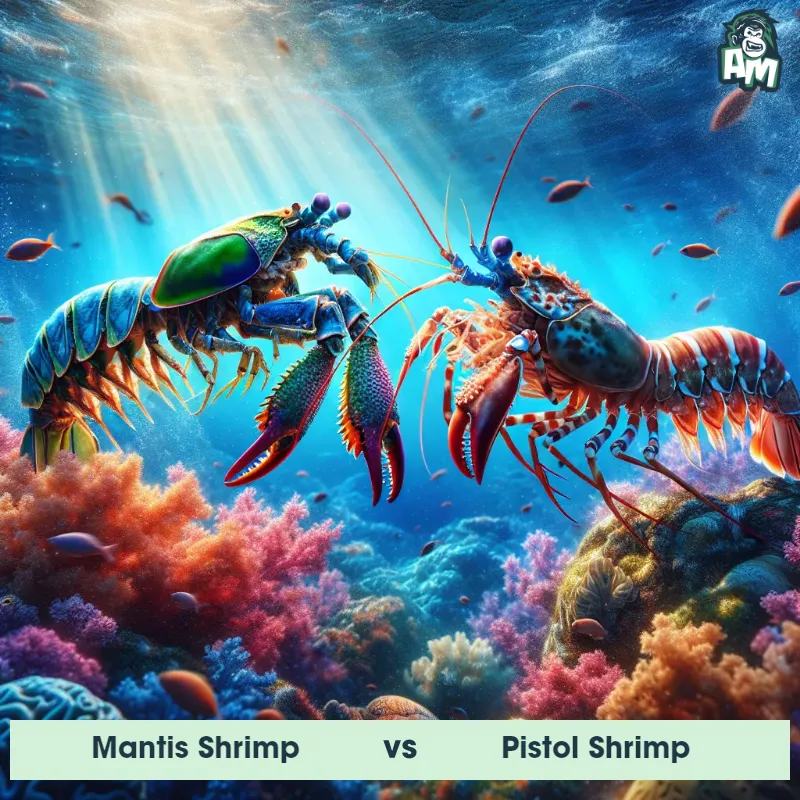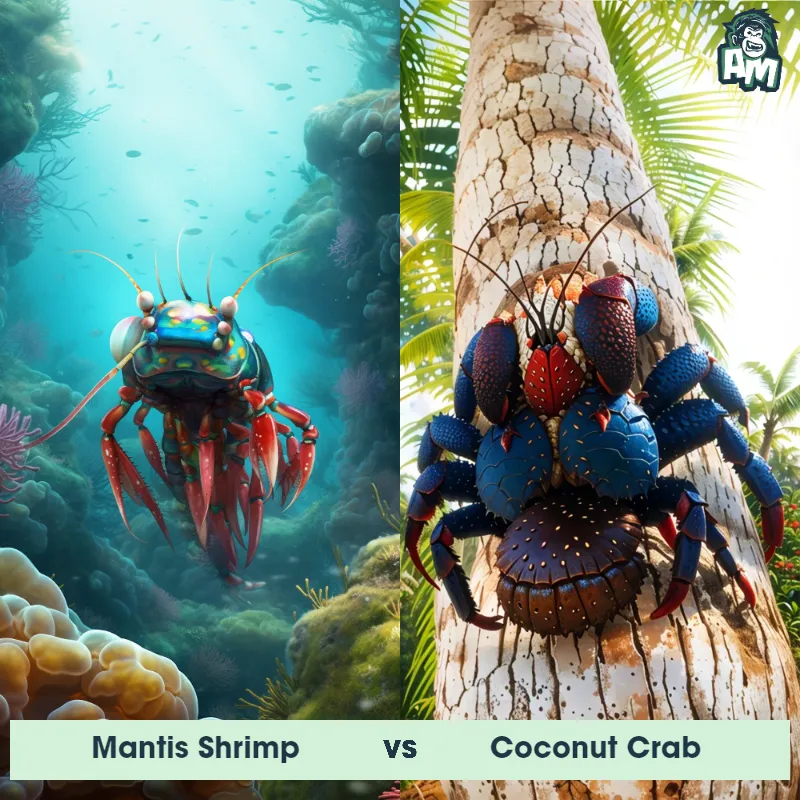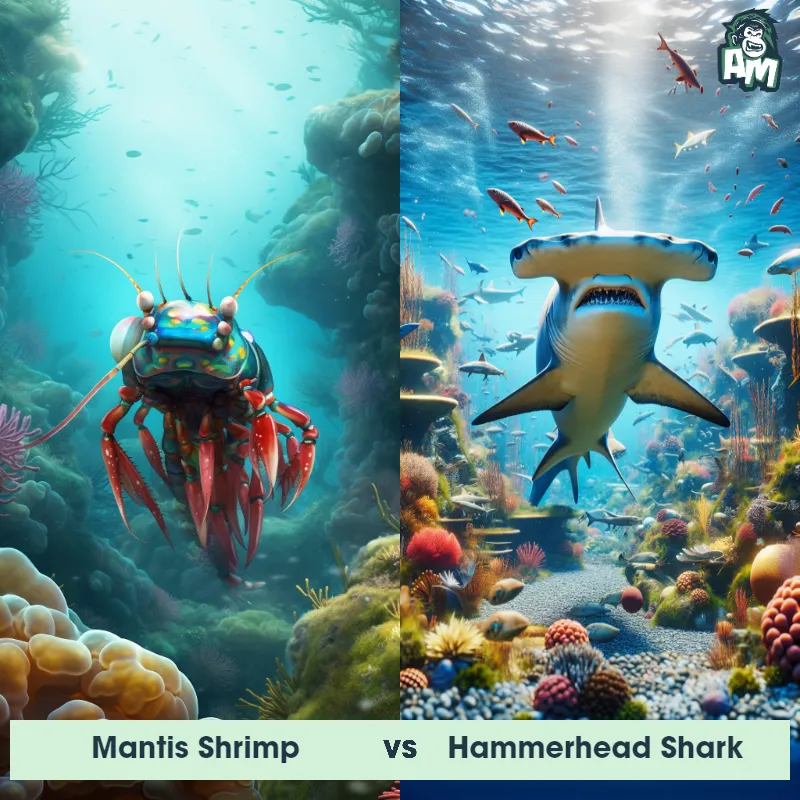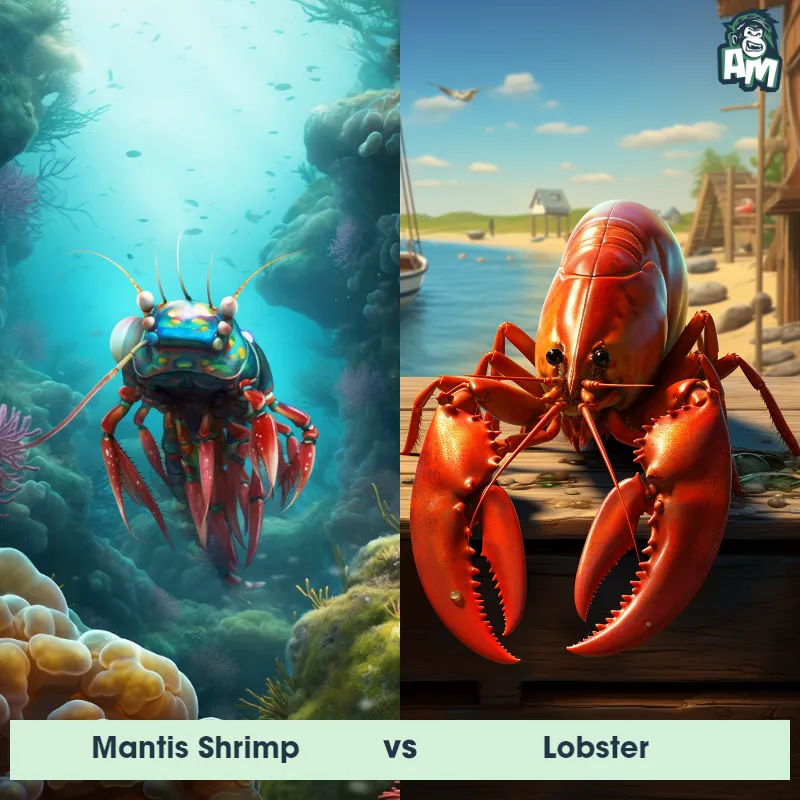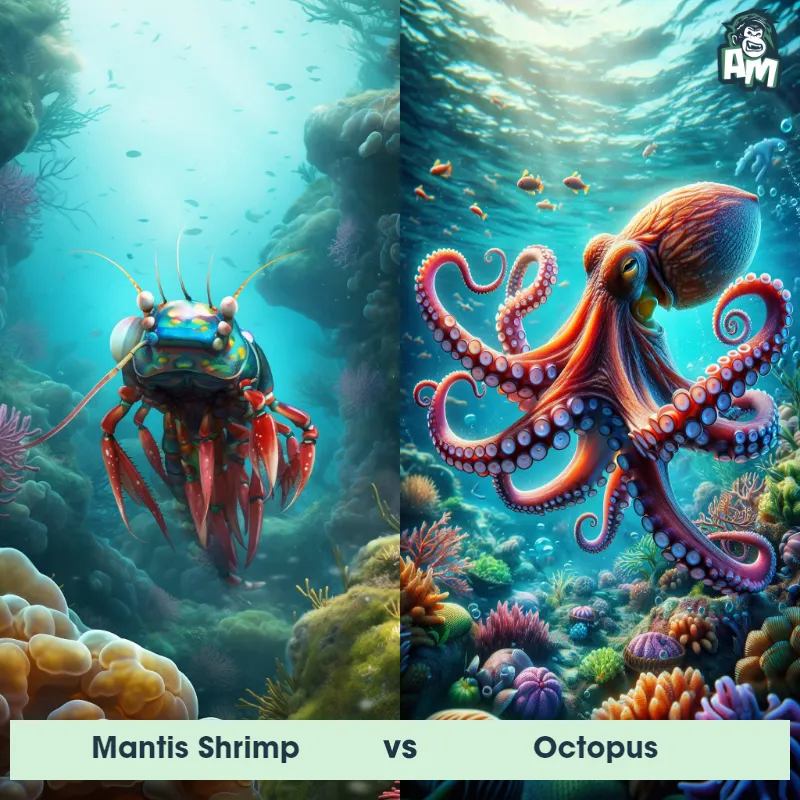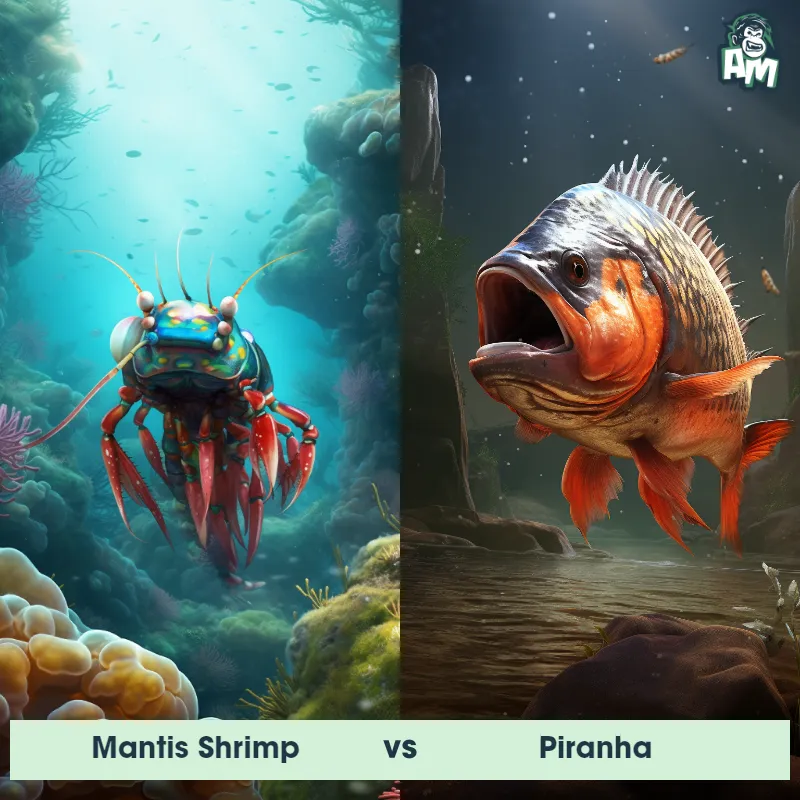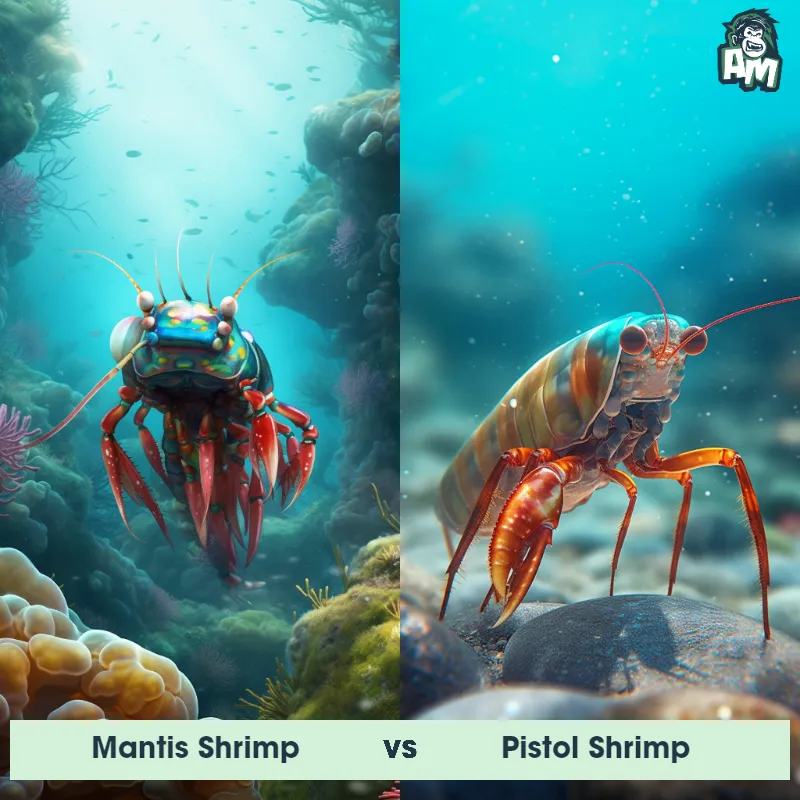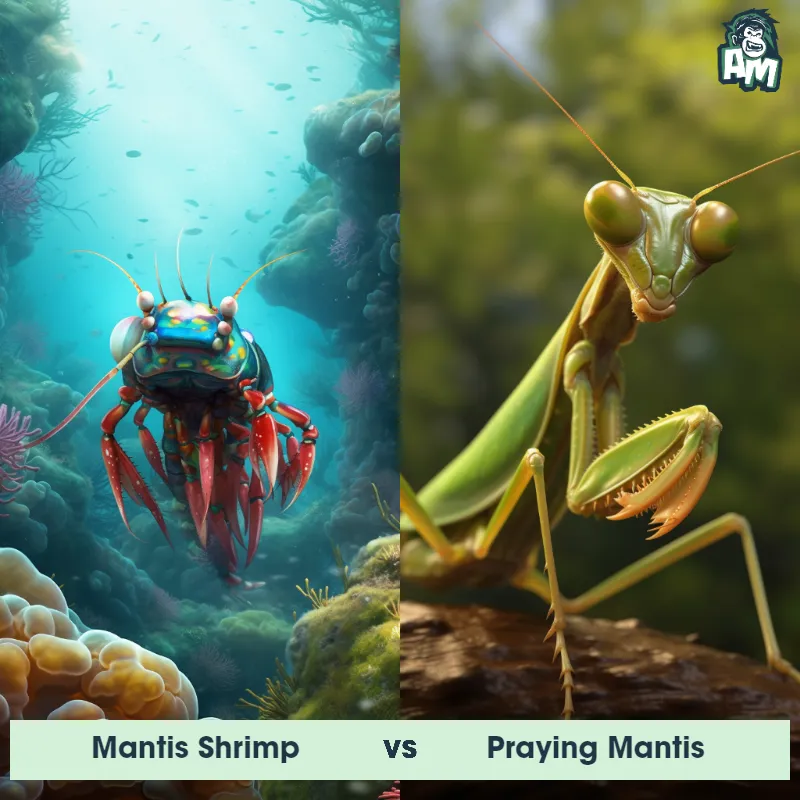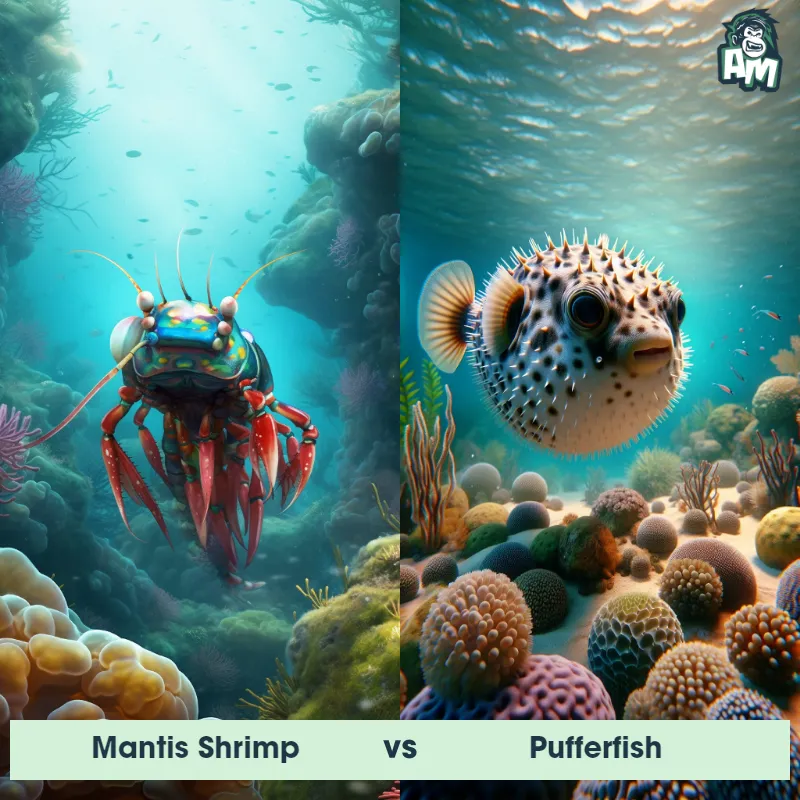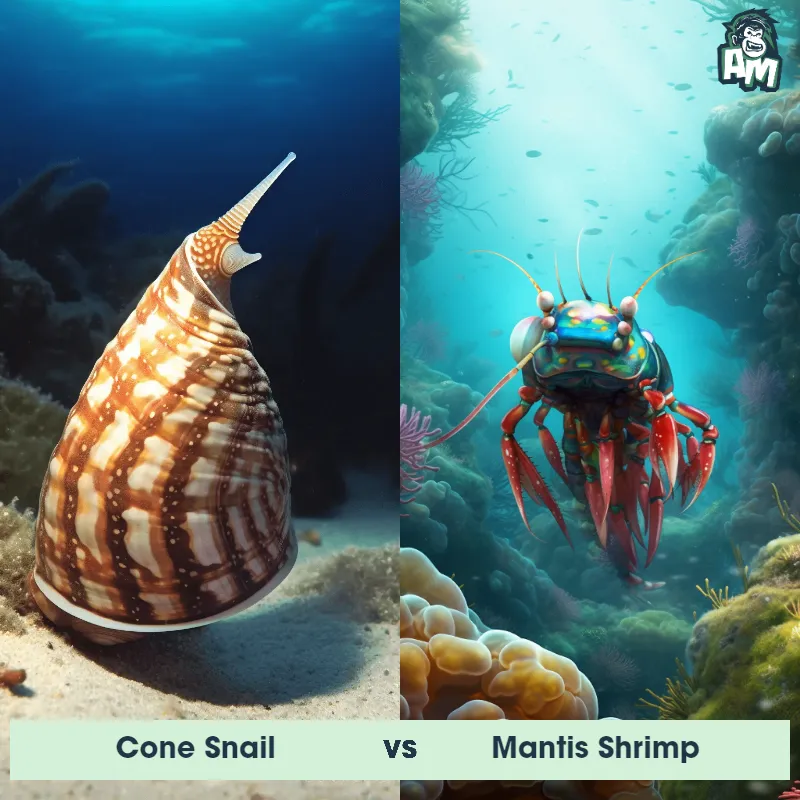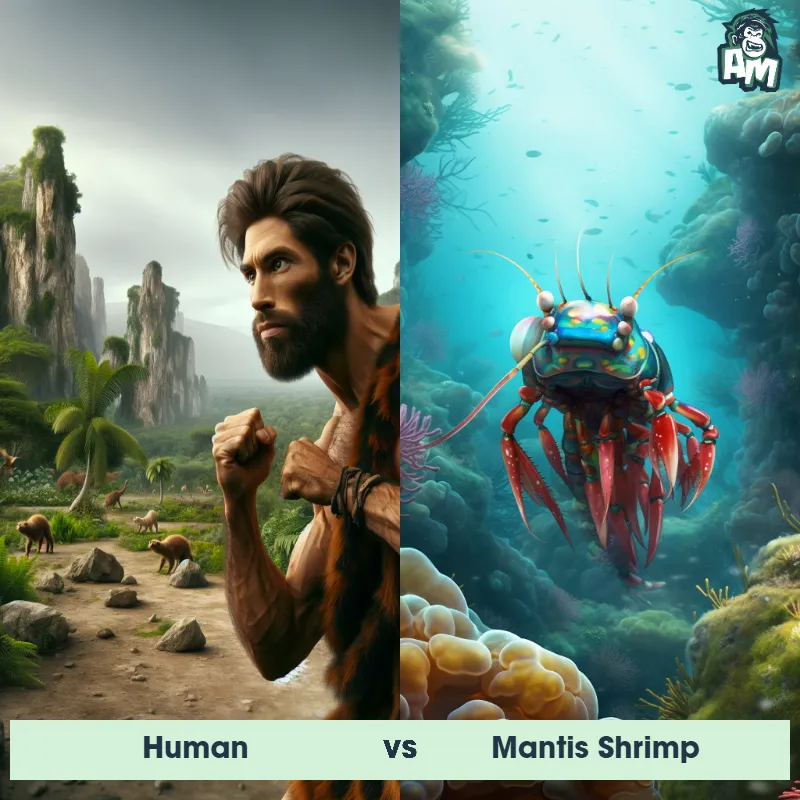The Mantis Shrimp
The Mantis Shrimp, also known as Stomatopods, are fascinating marine crustaceans found in tropical and subtropical waters. They are renowned for their extraordinary visual system, possessing one of the most complex eyes in the animal kingdom. Mantis Shrimp come in a variety of vibrant colors and can grow anywhere from a few centimeters to almost 40 centimeters in length. With strong claws that resemble praying mantis arms, they are skilled hunters that can punch their prey at incredible speeds, using their specialized appendages.
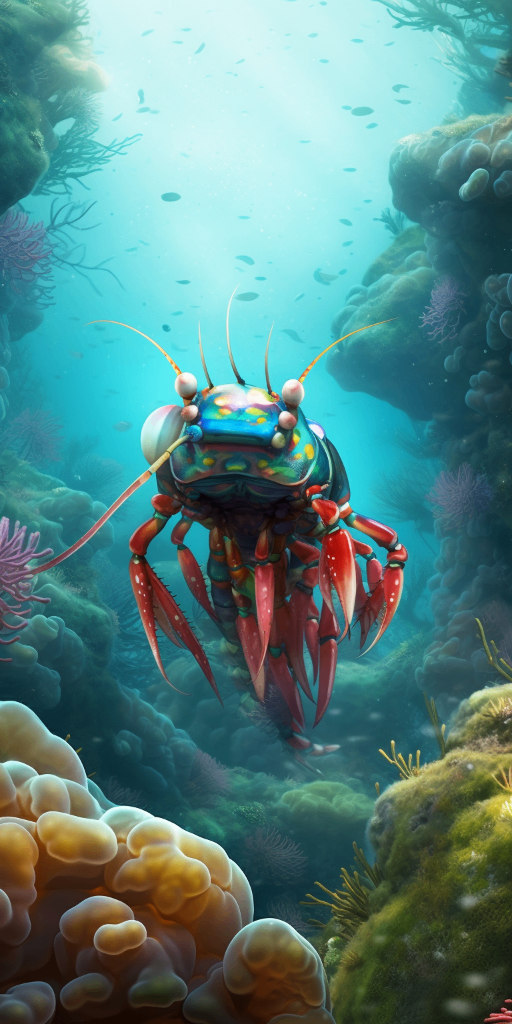
| Mantis Shrimp | |
|---|---|
| Size | Up to 12 inches (30 cm) long |
| Weight | Up to 2 pounds (0.9 kg) |
| Speed | Speed: 23 mph (37 km/hr) |
| Key Strength | Powerful raptorial appendages that can strike with incredible force |
| Biggest Weakness | Vulnerable to attacks on their soft underbelly |
| Scientific Name | Stomatopoda |
| Family | Stomatopodidae |
| Habitat | Marine |
| Geography | Tropical and subtropical regions worldwide |
| Diet | Small fish, crabs, mollusks, and other crustaceans |
| Lifespan | 4 years - 20 years |

The Mantis Shrimp
The Mantis Shrimp, also known as Stomatopods, are fascinating marine crustaceans found in tropical and subtropical waters. They are renowned for their extraordinary visual system, possessing one of the most complex eyes in the animal kingdom. Mantis Shrimp come in a variety of vibrant colors and can grow anywhere from a few centimeters to almost 40 centimeters in length. With strong claws that resemble praying mantis arms, they are skilled hunters that can punch their prey at incredible speeds, using their specialized appendages.
Fun Fact: One intriguing fun fact about Mantis Shrimp is that they have the fastest punch in the natural world, reaching speeds of up to 50 miles per hour, which is faster than the flick of a bullet from a handgun.
| Mantis Shrimp | |
|---|---|
| Size | Up to 12 inches (30 cm) long |
| Weight | Up to 2 pounds (0.9 kg) |
| Speed | Speed: 23 mph (37 km/hr) |
| Key Strength | Powerful raptorial appendages that can strike with incredible force |
| Biggest Weakness | Vulnerable to attacks on their soft underbelly |
| Scientific Name | Stomatopoda |
| Family | Stomatopodidae |
| Habitat | Marine |
| Geography | Tropical and subtropical regions worldwide |
| Diet | Small fish, crabs, mollusks, and other crustaceans |
| Lifespan | 4 years - 20 years |
Match Highlights
Mantis Shrimp Matchups
We use AI to simulate matchups between the Mantis Shrimp and other animals. Our simulation considers size, strength, and natural predatory behaviors to determine the most likely outcome.

Can't find the Matchup you want?
Create Your Own MatchupMantis Shrimp: Diet, Predators, Aggression, and Defensive Behaviors
What do Mantis Shrimp eat?
Mantis Shrimp are carnivorous creatures that primarily feed on crustaceans, fish, and mollusks. They use their powerful claws to smash their prey into smaller, more manageable pieces before devouring them.
Do Mantis Shrimp have any predators?
While Mantis Shrimp are known for their aggressive behavior and strong defenses, they do have some predators in the ocean. Some of their predators include larger fish, octopuses, and seals who are able to prey on them during vulnerable moments.
Are Mantis Shrimp aggressive?
Mantis Shrimp are highly aggressive creatures known for their territorial behavior and willingness to engage in fights with other Mantis Shrimp over territory or mating rights. They are also known to attack and kill other marine creatures if they feel threatened or hungry.
Do Mantis Shrimp fight?
Mantis Shrimp are infamous for their powerful strikes and ability to deliver quick, devastating blows to their opponents. They engage in combat with rivals over territory or mates, using their specialized appendages called dactyl clubs to inflict damage and establish dominance.
How do Mantis Shrimp defend themselves?
Mantis Shrimp use various tactics to defend themselves against predators or threats in their environment. They have highly-developed visual systems that allow them to detect danger quickly and react accordingly. In addition, they can also use their sharp claws to ward off potential threats by striking with incredible speed and force.
What is the biggest weakness of Mantis Shrimp in a fight?
Despite their impressive offensive capabilities, Mantis Shrimp have a notable weakness in their exoskeleton. While their exoskeleton provides them with protection and support, it can also be vulnerable to damage from powerful strikes or attacks. If their exoskeleton is compromised, Mantis Shrimp may be at risk of injury or defeat in a fight.
Fun Fact: Another fascinating fun fact about Mantis Shrimp is that they possess a visual spectrum beyond human comprehension, enabling them to see a broader range of colors, including ultraviolet light.
Fun Fact: Mantis Shrimp are known for their remarkable ability to break through the hard shells of their prey by using their powerful claws, which have enough force to break aquarium glass, earning them the nickname "thumb splitters."



